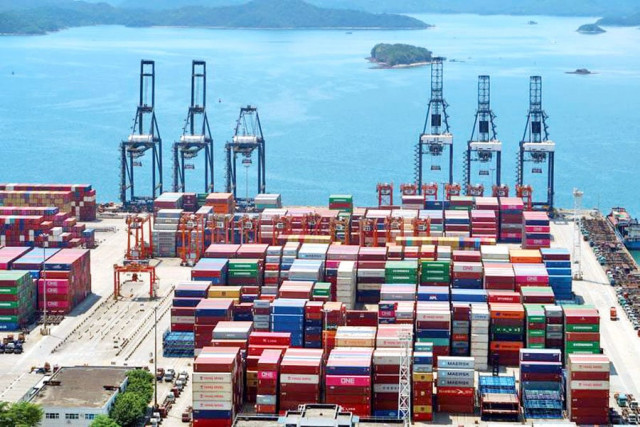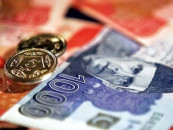Export push: an encouraging trend in economic recovery
Producers must upgrade machinery, equipment to ensure better competitiveness

The recently published summary on trade by the Pakistan Bureau of Statistics (PBS) indicates a continued promising trend.
Exports from Pakistan surpassed $2.1 billion in January 2021. Imports were reported at $4.7 billion.
Although the figures were lower than the values reported in December 2020, the year-on-year growth rate of exports was impressive, at 8.11%. On the other hand, imports too continued to increase year-on-year, at 14.85%.
Furthermore, exports in the first seven months of FY21 increased 5.53% over the value reported for the previous period. Imports increased 6.92% in the seven months. The trade deficit widened 8.27%.
Although Pakistan has reported a decrease in exports of 9.89% in January 2021 in comparison to December 2020, the overall trend in the last seven months does suggest an upward trajectory as compared to the stagnancy reported in recent years.
According to a statement of the World Trade Organisation (WTO) titled “World trade volume rallies in third quarter after Covid-19 shock”, the third quarter of 2020 showed a recovery in global trade as the volume of trade increased 11.6% compared to the second quarter of 2020.
However, it was still 5.6% lower than the volume reported in the same period of previous year. The total value of merchandise trade declined 4% year-on-year in the third quarter of 2020.
A closer look at the monthly data published by the WTO suggests that China was an exception as its exports increased not only 21% year-on-year in November 2020, but it also continued to report positive export growth rates since July 2020.
On the other hand, the United States reported negative monthly year-on-year growth rates since July 2020.
Although the Asian region did recover in the third quarter of 2020 and reported a positive export growth of 2%, primarily driven by China, it was an anomaly compared to the sharp decline in trade experienced by other regions such as North America, South and Central America and Europe.
Furthermore, the year-on-year monthly import growth in the European Union and the US was on average negative between July 2020 and October 2020. Figures for November 2020 showed a recovery as positive values were reported for both.
On the other hand, imports into China showed positive growth values since September 2020.
Finally, all commodities experienced a positive quarter-on-quarter price growth in the third quarter of 2020. The largest increase was in prices of fuels, which rose 34% in the third quarter of 2020, having decreased 18.5% and 35.1% in the first and second quarters respectively.
Prices for manufactured goods remained relatively stable with their quarter-on-quarter percentage change oscillating between -1.1% and 3.5%.
Market share
Unctad published a report titled “East Asian economies drive global trade recovery” in February 2021, identifying the countries that had either gained or lost their market share in 2020.
According to the report, the recovery process has been uneven with several countries facing significant challenges. China was a clear winner in terms of market share it gained, followed by Taiwan.
On the other hand, countries such as India, Japan and Mexico lost both their global export share and the global import share, signifying their predicament as the pandemic ravaged their economies.
Further analysing Pakistan’s export trend, the exports of textile products increased 7.8% in dollar terms in the first seven months of FY21 over the same period of previous year.
Exports of knitwear, bed wear and towels grew more than 16%. Interestingly, the exports of cotton cloth declined 7.7%.
With a large spike in exports of finished textile products, there is increasing demand for intermediate goods in the industry that were previously exported rather than domestically consumed.
Exports of leather manufactures showed a growth of 6.4%, driven by exports of leather gloves. Exports of pharmaceutical products increased 23.6%. This is crucial given that the pandemic took a much higher toll on other countries compared to Pakistan. There was a similar surge right before the pandemic hit Pakistan. This provides an opportunity to seek long-term benefits for the pharmaceutical industry from the trade linkages developed by the local pharma companies.
Higher demand for cars
As reported earlier in this article, imports into Pakistan have also increased. They breached $5 billion in December 2020, which was 24.5% higher than the value reported for December 2019.
Imports of textile machinery increased 28.2%, while those of office machinery rose 42.4%. Imports of mobile phones increased 82.5%.
A significant increase was reported in imports of transportation equipment, particularly CKD/SKD units of motor cars, which increased 5,000% in December 2020 over the value in December 2019.
This suggests that the demand for motor vehicles has increased, which was heavily subdued in the last couple of years.
Furthermore, there is an increase in imports of raw cotton and synthetic fibre, indicating an increase in activity in the textile sector. This is matched by the improving business confidence indicators reported by the SBP-IBA Business Confidence Survey in December 2020.
The industrial sector not only reports current economic conditions to be favourable but the expected economic conditions in the next six months to improve as well.
With exports increasing in recent months, the challenge is to ensure that this increase is sustainable given that exports from other similar economies are likely to recapture their lost market share.
The recent announcement by the State Bank of Pakistan (SBP) to facilitate startups, fintechs and exports is a step in the right direction. Furthermore, there is a need to upgrade machinery and equipment to ensure better competitiveness of domestic producers. The rising trend in the Temporary Economic Refinance Facility (TERF), which is aimed at promoting investments, balancing, modernisation and replacement (BMR), suggests an encouraging trend.
Lastly, the removal of regulatory duty on imports of unfinished goods for the textile industry is definitely a positive step to boost its production capacity and exports. This new trend in export growth after years of stagnancy must be made sustainable.
The writer is the Assistant Professor of Economics & Research Fellow at CBER, IBA
Published in The Express Tribune, February 15th, 2021.
Like Business on Facebook, follow @TribuneBiz on Twitter to stay informed and join in the conversation.



















COMMENTS
Comments are moderated and generally will be posted if they are on-topic and not abusive.
For more information, please see our Comments FAQ